
It’s rather sad that the best-selling book about Mary Magdalene is The Da Vinci Code, a novel that has now sold over 80 million copies. While the novel is, of course, named after the famous Italian painter and all-around “Renaissance man” and features the boring and often dense Robert Langdon, the main intrigue has to do with the mysterious woman from Magdala, as Sandra Miesel and I explained in The Da Vinci Hoax, in a chapter titled “The Magdalene: Saint, Sinner, or Goddess?”:
Mary Magdalene is the central character in The Da Vinci Code. However, the Mary Magdalene depicted by Brown and his characters is not always—or even occasionally—the Mary Magdalene depicted in the Gospels, revealed in history, and celebrated by the Church.
That’s right—celebrated by the Catholic Church, as well as by the Eastern Orthodox and some Protestant denominations. This might come as a surprise to anyone who has formed their understanding of Mary Magdalene by reading Brown’s novel. For many readers, The Da Vinci Code is their first encounter with Mary Magdalene; for others, it is the first time they’ve heard an alternative history of the mysterious disciple of Jesus—a history fraught with serious problems. In the course of about twenty-five pages (236-261), readers of Dan Brown’s novel are exposed to a flood of claims about Mary Magdalene, her identity, her relationship to Jesus, her role in the early Church, and what she supposedly has to do with the Holy Grail.
The one positive to come out of the success of Dan Brown’s success was that many good articles and books were written to set the record straight. Among them was Amy Welborn’s De-Coding Mary Magdalene (OSV), which Amy has posted on her blog as a PDF, free of charge. As she states in a post today, the Feast of St. Mary Magdalene, “The Da Vinci Code moment has mercifully past, but I hope St. Mary Magdalene’s hasn’t.”
Back in 2006, I interviewed Amy about her book; here is the heart of that conversation:
IgnatiusInsight.com: Why and how has Mary Magdalene become the poster person for radical feminism and various anti-Catholic conspiracy theories?
Welborn: The rediscovery of gnostic writings that mention a “Mary” has fueled this, as well as a more general scholarly endeavor of re-examining female historical figures in religious history. The gnostic writings have really been key, as some scholars have used – and misused – them to posit an alternative strand of early Christianity (“Magdalene Christianity” it is often called) in which Mary Magdalene, who was clearly important in the Gospels, was a leader of an egalitarian element of early Christianity. There are all kinds of permutations of this, most recently in the quite bizarre Bruce Chilton book Mary Magdalene, in which the Episcopal priest-writer suggests that Mary was trained by Jesus in some sort of intense spiritual kind of “seeing” and her experience of what we call the “resurrection” was the ultimate fruit of that formation.
IgnatiusInsight.com: What do we know about Mary Magdalene and what are our sources for our knowledge of her?
Welborn: Our primary sources for knowledge of Mary Magdalene are in the Gospels. From them, in Luke 8, we learn that Mary of Magdala (a small town on the Sea of Galilee) had been exorcised of seven demons by Jesus, and left everything behind in gratitude to follow him, along with some other women, and provide for the disciples’ needs. This could be doing domestic work for them, providing funds to support the ministry, or both.
We then see Mary, in every gospel, at the Cross, then as the first to discover the Empty Tomb.
There is an enormous amount of legendary material about Mary Magdalene in both West and East. It’s fascinating and rich. One of the primary strains in the West has her traveling to Provence (an idea picked up by the radical feminist author of The Woman With the Alabaster Jar, Margaret Starbird, and then turned for her own ends) and, along with Martha and Lazarus, evangelizing the area; there is even some medieval art that depicts Mary preaching and baptizing. She was a favorite subject for medieval mystery plays and, of course, art.
But what we know for sure about her is contained in the Gospels.
IgnatiusInsight.com: Why is there such a strong interest in Mary Magdalene?
Welborn: She’s an interesting figure, and for many, she represents possibilities – the possibility that in early Christianity, women had official roles of power, that Jesus was married, and so on. It is unfortunate that these days, interest in Mary Magdalene is much higher among non-Christians and marginal Christians than among mainstream Catholics, especially considering the massive popularity of devotion to her throughout much of our history.IgnatiusInsight.com: The Da Vinci Code centers upon an alleged marriage between Mary Magdalene and Jesus. Is there any evidence for such a marriage?
Welborn: No. There’s no evidence in Scripture, and the Gospels are forthright about Jesus’ familial connections. The Gospel writers name names and discuss Jesus’ ambiguous relationship to his family members and his fellow townspeople. They name the apostles and other associates. They name Mary of Magdala, for heaven’s sake. Who is, note, called Mary of Magdala, which she would not be if she were married to Jesus. There would have been no scandal in first-century Judaism of Jesus being married to anyone. There was nothing to hide.
In addition, there is no mention of any such marriage in early Christian traditions – the traditions, for example, that give us the name of Mary’s parents (Joachim and Anna). No, this Jesus-Mary Magdalene marriage is a twentieth-century creation.
Interestingly enough, in the massive legendary material surrounding the figure of Mary Magdalene, a marriage is mentioned – one of the legends says that the Wedding at Cana was actually the marriage of Mary Magdalene and John the Apostle. John was so impressed with Jesus’ miracle there that he abandoned everything and followed Jesus. This ticked Mary Magdalene off to such an extent that she went off and led a profligate life until she, too, saw the truth, and became a follower of Jesus.
IgnatiusInsight.com: What is the biggest misconception you’ve found that people have about Mary Magdalene?
Welborn: The biggest misconception, by far, is that the Catholic Church has demonized Mary Magdalene as a prostitute. This has taken hold among the general public and won’t let go.
The truth is this: in the first centuries of Christianity, some Church Fathers wondered, here and there, if the named Mary Magdalene might be the same person as Mary, the sister of Martha and Lazarus, as well as the repentant woman who comes to Jesus at the end of Luke 7, just before Mary Magdalene is first mentioned by name in Luke 8.
In 591, Pope Gregory I preached a homily in which he explicitly associated all of these women, and identified Mary Magdalene as the sinful woman of Luke 7. From that point on, this was an important part of her identity for medieval Christians.
Note, however, that neither Gregory nor any subsequent preacher or writer “demonized” or maligned Mary Magdalene. It was quite the opposite. She was held up as a model and figure of hope. Her story was told and expanded over and over again, with the focus not being sinfulness, but rather redemption. Throughout the Middle Ages, other aspects entered into the story, as well – her evangelizing in Provence, her supposed decades of contemplative life, and so on. She inspired numerous saints, she was present in art mostly as a faithful disciple at the foot of the cross, either mourning or supporting Mary, the Mother of Jesus, but she was never demonized. She’s a saint! Her feast day is July 22!
And here is a short excerpt from The Da Vinci Hoax:
Any supposed attempts to rid the Church of Mary Magdalene or ban her name from being mentioned did not succeed, simply because they didn’t exist. In fact, many of the early Church Fathers remark about the Magdalene, and she is described by Hippolytus (c. 170-c. 236) as “the apostle to the apostles” in his commentary on the Song of Songs. Even feminist theologian Rosemary Radford Ruether, hardly a supporter of the Catholic hierarchy, scoffs at the notion of a conspiracy against Mary Magdalene, pointing to the positive treatment she received from the early Church Fathers:
“This high regard for Mary Magdalene continues in the fourth- and fifth-century Latin fathers of the church. Ambrose, bishop of Milan, associated Mary Magdalene with the New Eve who clings to Christ as the new Tree of Life, thereby reversing the unfaithfulness of the first Eve. Augustine maintains this view, pairing Mary Magdalene with Christ as symbol of the New Eve and the church in relation to Christ as the New Adam. Her faithfulness reversed the sin of the first Eve.”
By the eighth century the Western Church was celebrating a feast day for Mary Magdalene, the twenty-second day of July. By the ninth century there were specific prayers for her feast day, and by the eleventh century there was “a complete mass dedicated to the saint (with introit, gradual, offertory, communion, and lessons)”. It was also in the eleventh century that devotion to the Magdalene began to noticeably increase. The cult of Mary Magdalene was established at Vézelay, the Romanesque church in Burgandy that had been founded in the ninth century and was originally dedicated to the Virgin Mary. During the abbacy of Geoffrey (1037-1052) Mary was recognized as the patron of that church in a papal bull dated April 27, 1050, by Pope Leo IX. At the same time, relics of the Magdalene were being sought and gathered in earnest, and soon Vézelay became a major destination for pilgrimages.
Numerous stories, almost all of them fanciful and legendary in nature, were created to explain how Mary’s remains had arrived at Vézelay. A leading tradition in the West held that Mary Magdalen, Martha, and Lazarus were expelled from Palestine following the crucifixion of Christ. Floating in an oarless boat, they eventually arrived at the southern coast of France. In the East, a tradition stated that Mary had been the companion of the Apostle John and Mary, the Mother of Jesus, and that they had all settled in Ephesus. According to The Golden Legend, the Magdalene and John were betrothed. Some legends depict Mary living her final days in a cave in France, a hermit covered only by her long hair; these stories probably date back no farther than the ninth century.
During the late medieval era it was common to hear sermons about Mary Magdalene and how she fulfilled the apostolic life. She was also a model for Christians seeking to leave behind a life of sensuality and luxury, an encouragement to monks and nuns, as well as an exhortation to prostitutes. “But most of all a Magdalen sermon was the vehicle by which preachers called people to penance and offered them the hope of salvation. . . . We must not forget that it is our own age that officially memorializes Saint Mary Magdalene as a disciple; it was the ‘Dark Ages’ that honored her as a preacher and apostle of the apostles.”
Among the many things to be garnered from the laughable conspiracy theories of Dan Brown (and his various sources), is that the truth about the Gospels, Jesus Christ, the saints, and the Catholic Church is far, far more interesting and edifying than the shallow (but superficially attractive) falsehoods of pseudo-scholars and anti-Catholic shills. The Magdalene is, like all the saints, an example; but, as the Fathers, Doctors, and others have noted, she holds a special place in the life of the Church because of her encounter with the Risen Lord. This is touched on quite beautifully by Pope Francis in his May 17, 2017 General Audience:
The Gospel describes Magdalene by immediately highlighting that she was not a woman easily given to enthusiasm (cf. Jn 20:1-2, 11-18). In fact, after her visit to the sepulchre, she returns disappointed to the Apostles’ hiding place. She tells them that the stone has been removed from the entrance to the sepulchre, and her first hypothesis is the simplest that one could formulate: someone must have stolen Jesus’ body. Thus, the first announcement that Mary makes is not the one of the Resurrection, but of a theft perpetrated by persons unknown while all Jerusalem slept.
The Gospels then tell of Magdalene’s second visit to Jesus’ sepulchre. She was stubborn! She went, she returned … because she was not convinced! This time her step is slow and very heavy. Mary suffers twice as much: first for the death of Jesus, and then for the inexplicable disappearance of his body.
It is as she is stooping near the tomb, her eyes filled with tears, that God surprises her in the most unexpected way. John the Evangelist stresses how persistent her blindness is. She does not notice the presence of the two angels who question her, and she does not become suspicious even when she sees the man behind her, whom she believes is the custodian of the garden. Instead, she discovers the most overwhelming event in the history of mankind when she is finally called by her name: “Mary!” (v. 16).
How nice it is to think that the first apparition of the Risen One — according to the Gospels — took place in such a personal way! To think that there is someone who knows us, who sees our suffering and disappointment, who is moved with us and calls us by name. It is a law which we find engraved on many pages of the Gospel. There are many people around Jesus who search for God, but the most prodigious reality is that, long before that, in the first place there is God, who is concerned about our life, who wants to raise it, and to do this, he calls us by name, recognizing the individual face of each person. Each person is a love story that God writes on this earth. Each one of us is God’s love story. He calls each of us by our name: he knows us by name; he looks at us; he waits for us; he forgives us; he is patient with us. Is this true or not true? Each of us experiences this.
And Jesus calls her: “Mary!”: the revolution of her life, the revolution destined to transform the life of every man and every woman begins with a name which echoes in the garden of the empty sepulchre. The Gospels describe Mary’s happiness. Jesus’ Resurrection is not a joy which is measured with a dropper, but a waterfall that cascades over life. Christian life is not woven of soft joys, but of waves which engulf everything. You too, try to imagine, right now, with the baggage of disappointments and failures that each of us carries in our heart, that there is a God close to us who calls us by name and says to us: ‘Rise, stop weeping, for I have come to free you!”. This is beautiful.
Jesus is not one who adapts to the world, tolerating in it the persistence of death, sadness, hatred, the moral destruction of people…. Our God is not inert, but our God — allow me to say — is a dreamer: he dreams of the transformation of the world, and accomplished it in the mystery of the Resurrection.
St. Mary Magdalene, pray for us!
If you value the news and views Catholic World Report provides, please consider donating to support our efforts. Your contribution will help us continue to make CWR available to all readers worldwide for free, without a subscription. Thank you for your generosity!
Click here for more information on donating to CWR. Click here to sign up for our newsletter.






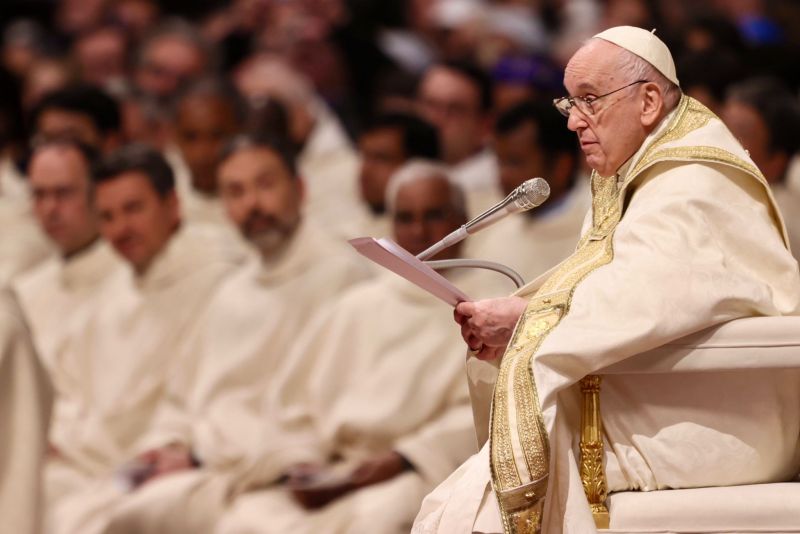
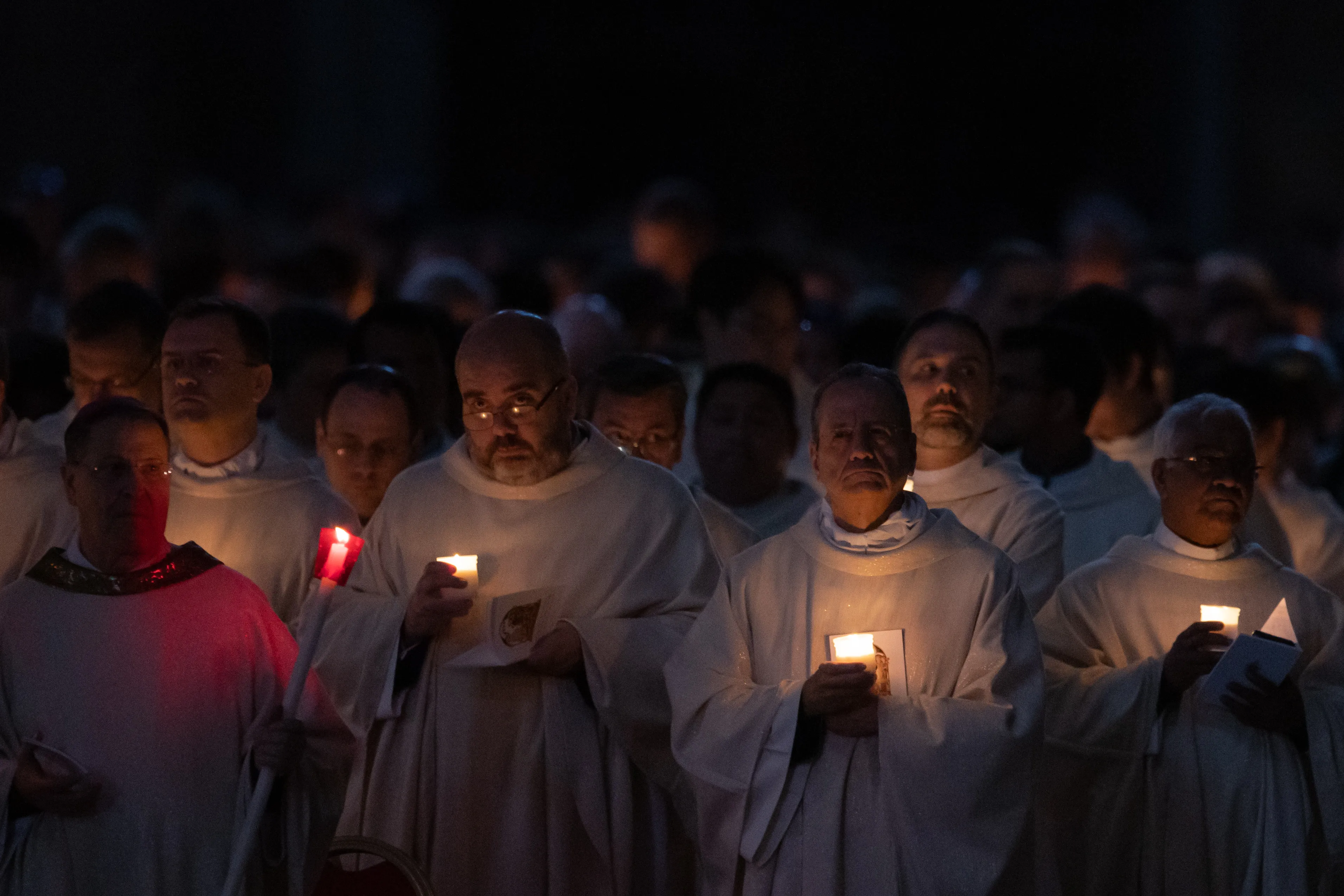
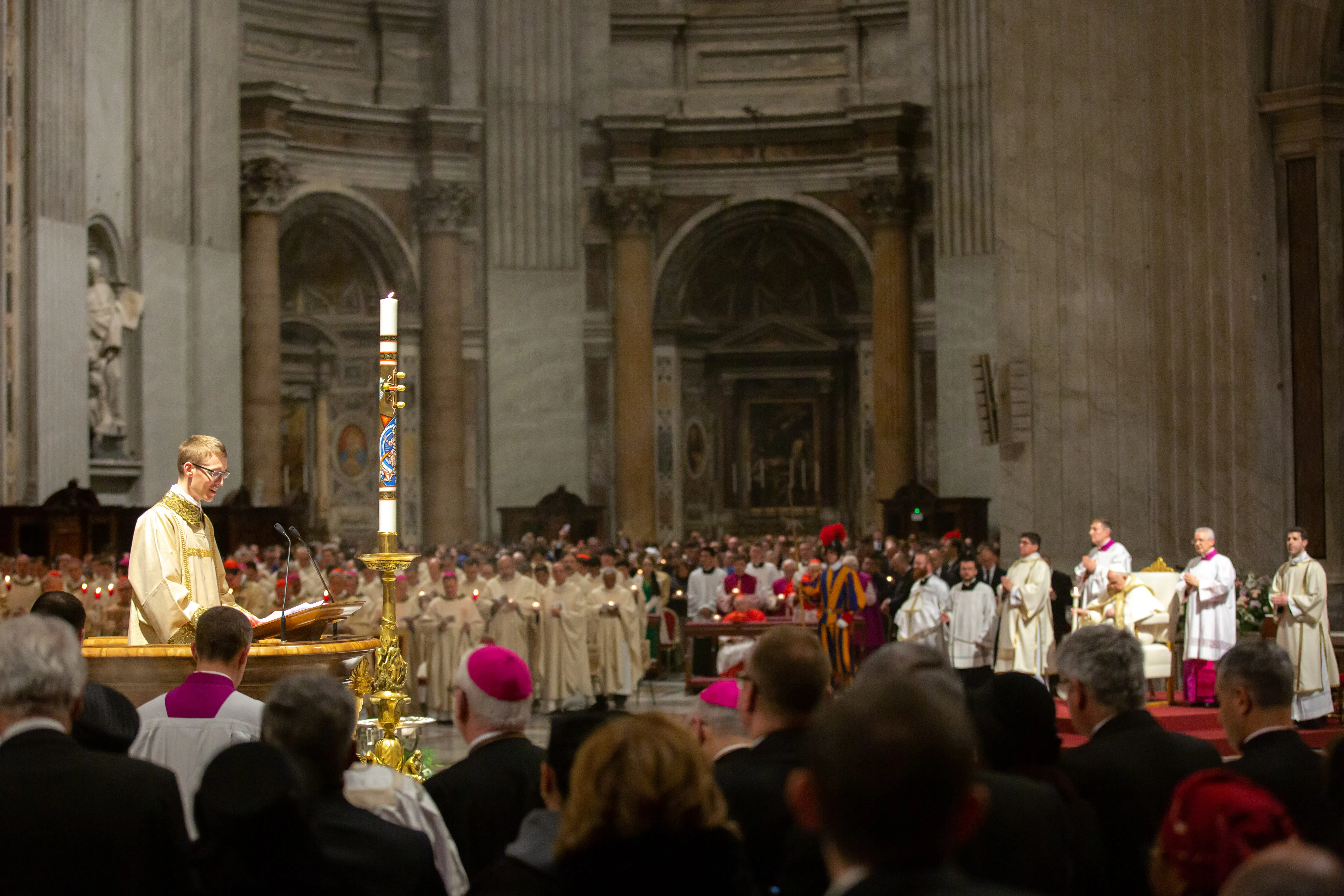
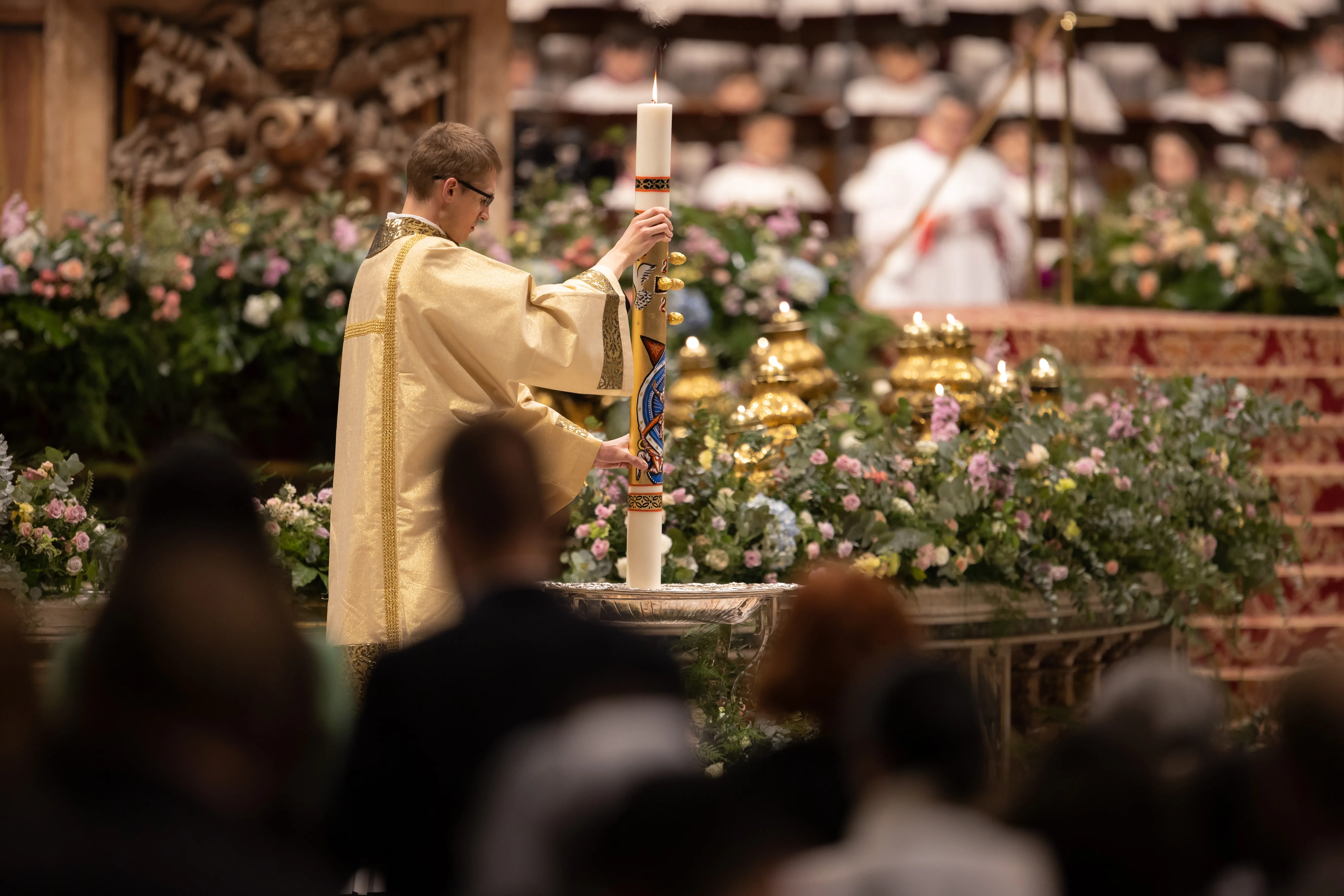
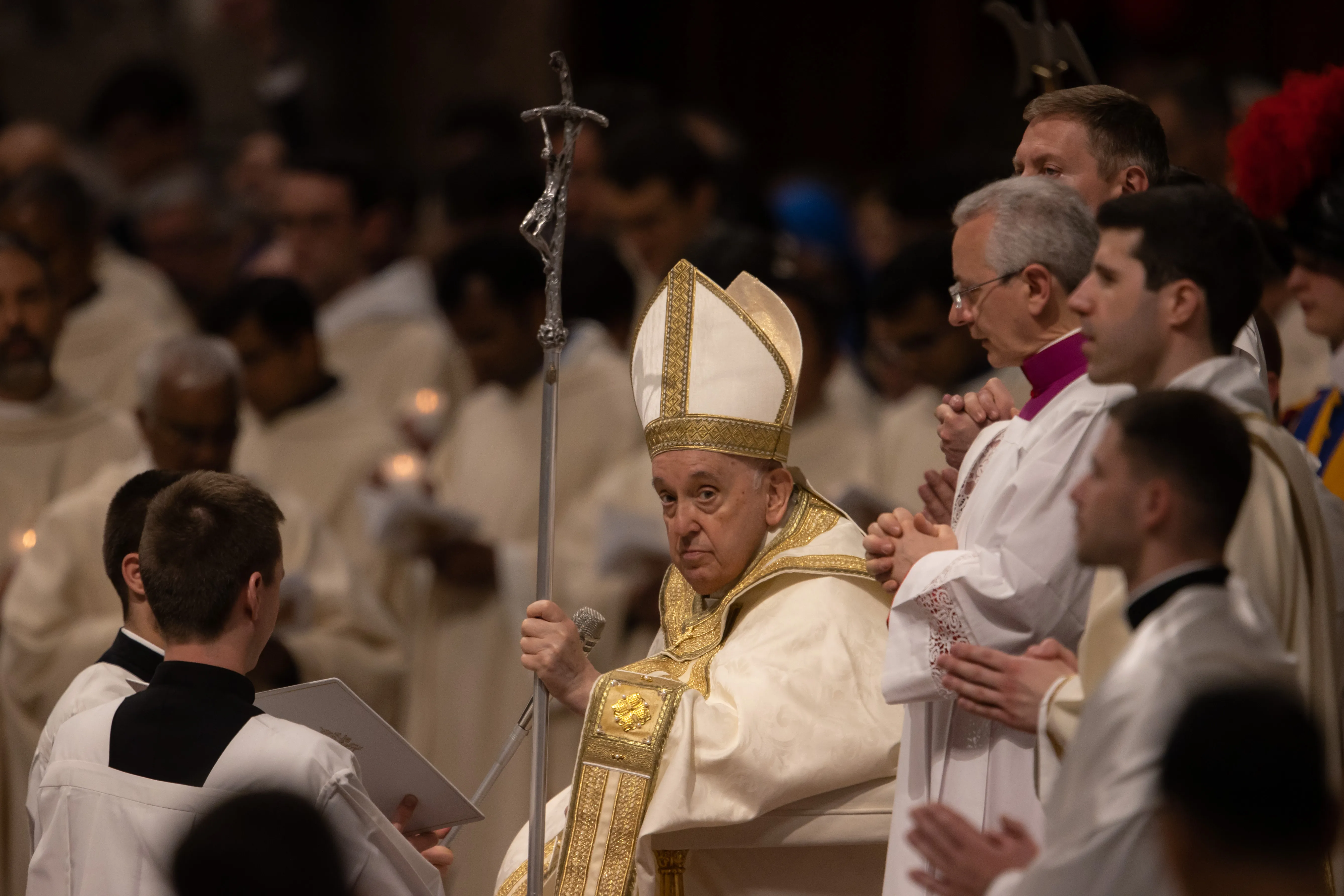
“A leading tradition in the West held that Mary Magdalen, Martha, and Lazarus were expelled from Palestine following the crucifixion of Christ. Floating in an oarless boat.” At first I thought you believed this fairy tale. Pope Saint Gregory the Great may have had it right. I’ve always felt she might have been the mysterious woman weeping at his feet. Anointing them then drying them with her hair. Kissing his feet. Something only a woman would do. Reserved exclusively for the divinity. Indicative of a great, passionate love. Mary Lazarus and Martha’s sister did similar but without the remarkable show of affection. Scripture contains accounts of other events that seem similar but differ in description. We simply don’t know. “But what we know for sure about her is contained in the Gospels”. If Christ cast seven devils out of Mary Magdalene, the devils each representing some form of evil she clearly had reason to be effusive in her thanks. Church tradition at least in regards to her sinful past seems correct. He came to call sinners. Appearing to her first underscores that. We need to keep in mind it’s not a person’s past that matters. It’s what they are capable of becoming. A passionate lover of God. And reserved for her, “She discovers the most overwhelming event in the history of mankind when she is finally called by her name: ‘Mary!’ (v. 16)”.
Isn’t this, though, the root cause of this Magdalene controversy? It’s because there’s “the Mary Magdalene depicted in the Gospels”; and, then, there’s “the Mary Magdalene depicted … revealed in history”; and, then, there’s “the Mary Magdalene … celebrated by the Church.” And all 3 “depict(ions)” of her, aren’t consistent with each! So what’s Amy Welborn’s point, other than to obfuscate and self-validate, for saying, “Our primary sources for knowledge of Mary Magdalene are in the Gospels”, when in practice the other two sources – “history” and “traditions” are EQUALLY “primary” at the same time as well? Here I’ll show you what I mean:
(1) “In the first centuries … some Church Fathers wondered … if the named Mary Magdalene might be the same person as Mary, the sister of Martha and Lazarus, as well as the repentant woman who comes to Jesus at the end of Luke 7”.
(2) “The Magdalene … is described by Hippolytus (c. 170-c. 236) as ‘the apostle to the apostles’ in his commentary on the Song of Songs.”
See that now? That means it’s not true what Amy Welborn would like us to believe, that “our primary sources for knowledge of Mary Magdalene are in the Gospels”. Because the “primary sources” in both cases are “the traditions” – NOT “the Gospels” at all! But if that’s OK, why, then, isn’t it OK for the Gnostics’ writings, Dan Brown’s The Da Vinci Code and Bruce Chilton’s Mary Magdalene to be based upon their own “primary sources for knowledge of Mary Magdalene” that LIKEWISE “are (NOT) in the Gospels”, but rather, instead, in “the traditions” of alternative Christianities?
How I wish that ALL “our primary sources for knowledge of Mary Magdalene are in the Gospels” – period – is all I’m saying.
Saint Mary Magdalene – Pray for us.